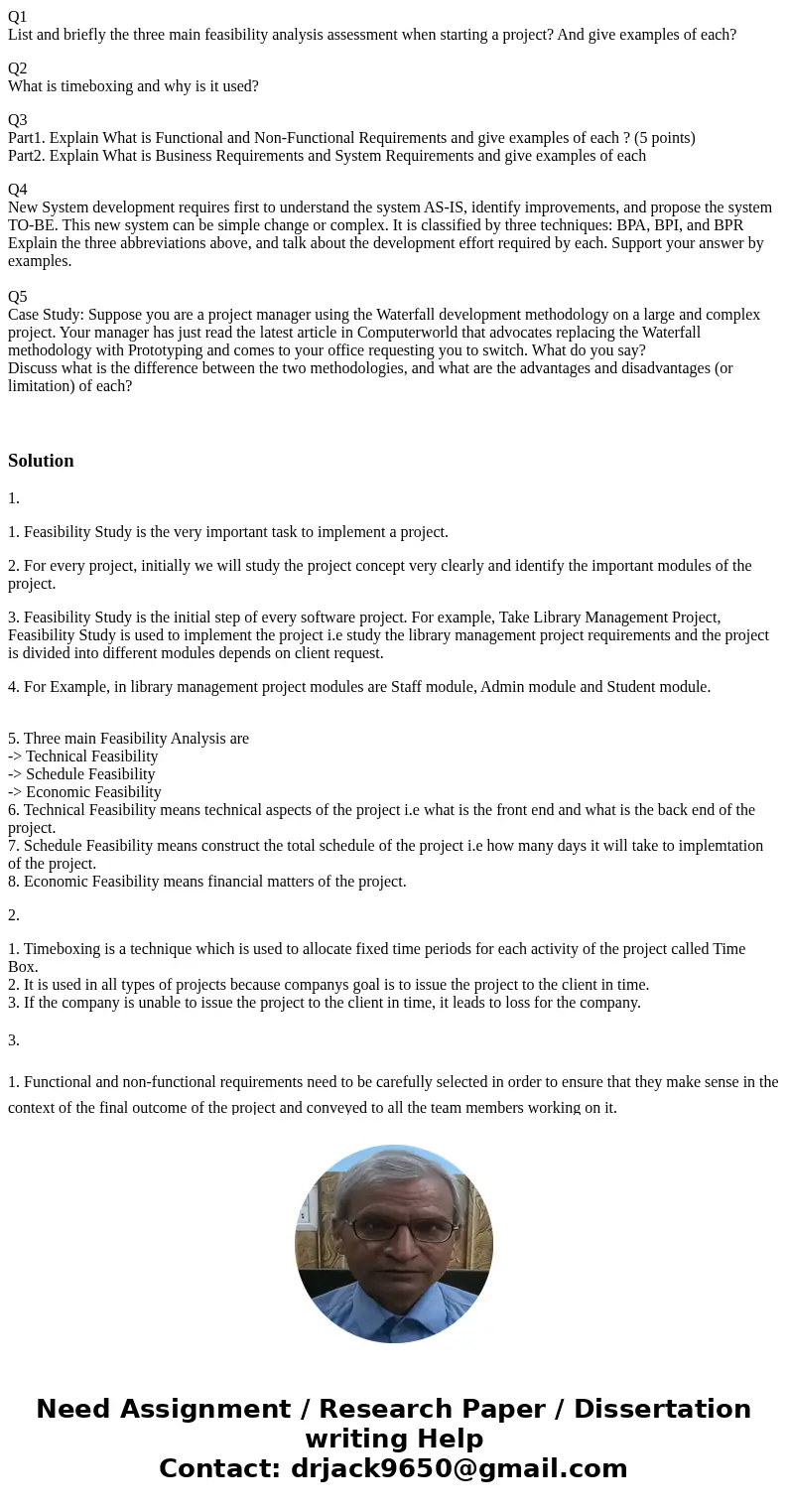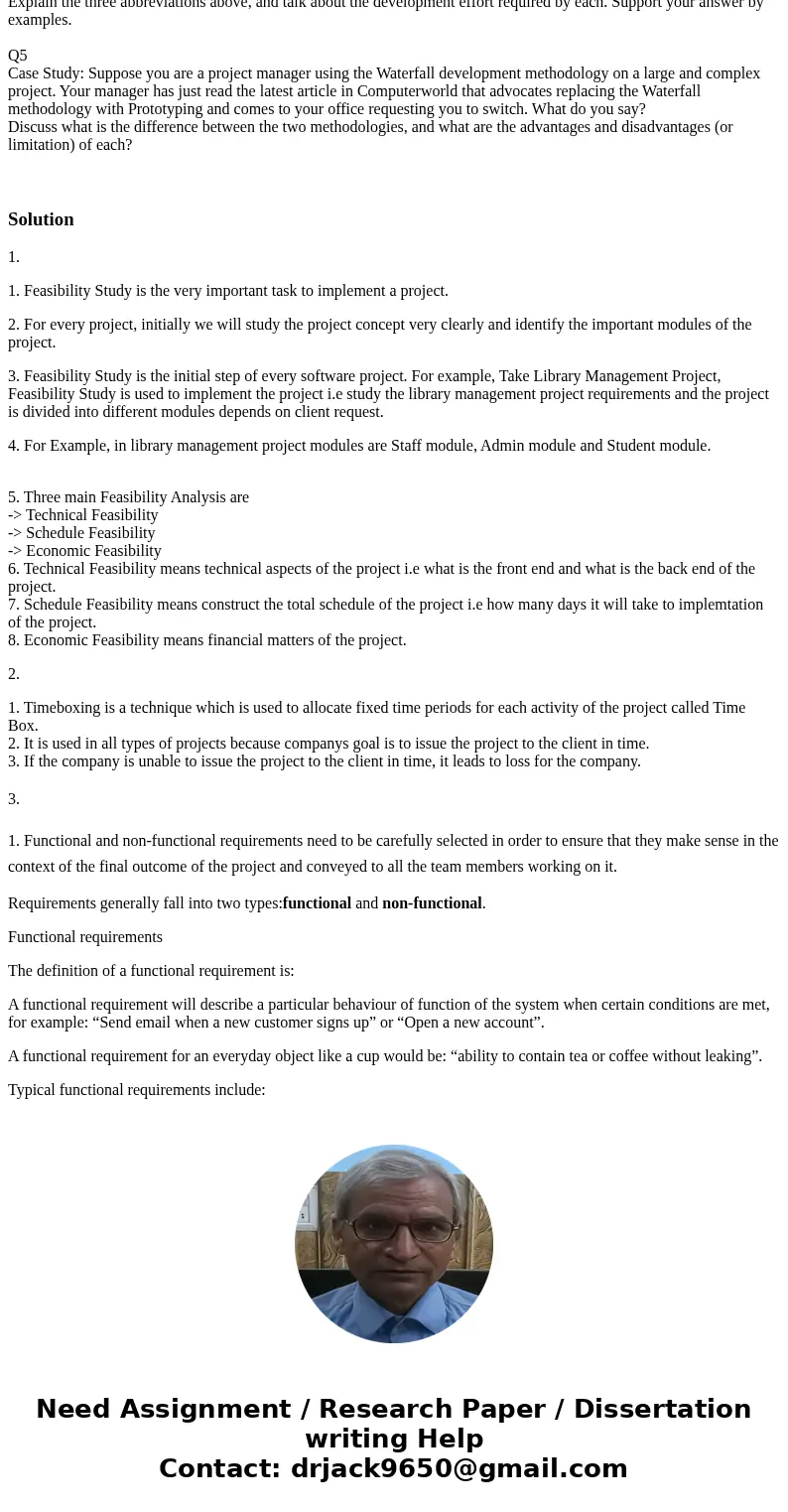Q1 List and briefly the three main feasibility analysis asse
Q1
List and briefly the three main feasibility analysis assessment when starting a project? And give examples of each?
Q2
What is timeboxing and why is it used?
Q3
Part1. Explain What is Functional and Non-Functional Requirements and give examples of each ? (5 points)
Part2. Explain What is Business Requirements and System Requirements and give examples of each
Q4
New System development requires first to understand the system AS-IS, identify improvements, and propose the system TO-BE. This new system can be simple change or complex. It is classified by three techniques: BPA, BPI, and BPR
Explain the three abbreviations above, and talk about the development effort required by each. Support your answer by examples.
Q5
Case Study: Suppose you are a project manager using the Waterfall development methodology on a large and complex project. Your manager has just read the latest article in Computerworld that advocates replacing the Waterfall methodology with Prototyping and comes to your office requesting you to switch. What do you say?
Discuss what is the difference between the two methodologies, and what are the advantages and disadvantages (or limitation) of each?
Solution
1.
1. Feasibility Study is the very important task to implement a project.
2. For every project, initially we will study the project concept very clearly and identify the important modules of the project.
3. Feasibility Study is the initial step of every software project. For example, Take Library Management Project, Feasibility Study is used to implement the project i.e study the library management project requirements and the project is divided into different modules depends on client request.
4. For Example, in library management project modules are Staff module, Admin module and Student module.
5. Three main Feasibility Analysis are
-> Technical Feasibility
-> Schedule Feasibility
-> Economic Feasibility
6. Technical Feasibility means technical aspects of the project i.e what is the front end and what is the back end of the project.
7. Schedule Feasibility means construct the total schedule of the project i.e how many days it will take to implemtation of the project.
8. Economic Feasibility means financial matters of the project.
2.
1. Timeboxing is a technique which is used to allocate fixed time periods for each activity of the project called Time Box.
2. It is used in all types of projects because companys goal is to issue the project to the client in time.
3. If the company is unable to issue the project to the client in time, it leads to loss for the company.
3.
1. Functional and non-functional requirements need to be carefully selected in order to ensure that they make sense in the context of the final outcome of the project and conveyed to all the team members working on it.
Requirements generally fall into two types:functional and non-functional.
Functional requirements
The definition of a functional requirement is:
A functional requirement will describe a particular behaviour of function of the system when certain conditions are met, for example: “Send email when a new customer signs up” or “Open a new account”.
A functional requirement for an everyday object like a cup would be: “ability to contain tea or coffee without leaking”.
Typical functional requirements include:


 Homework Sourse
Homework Sourse